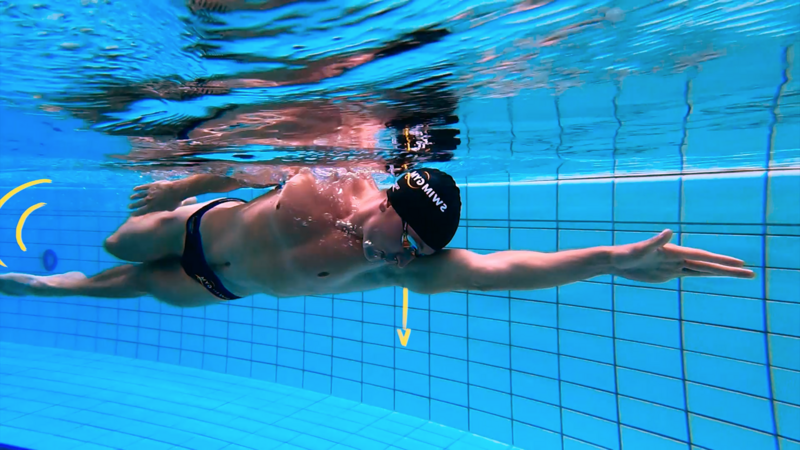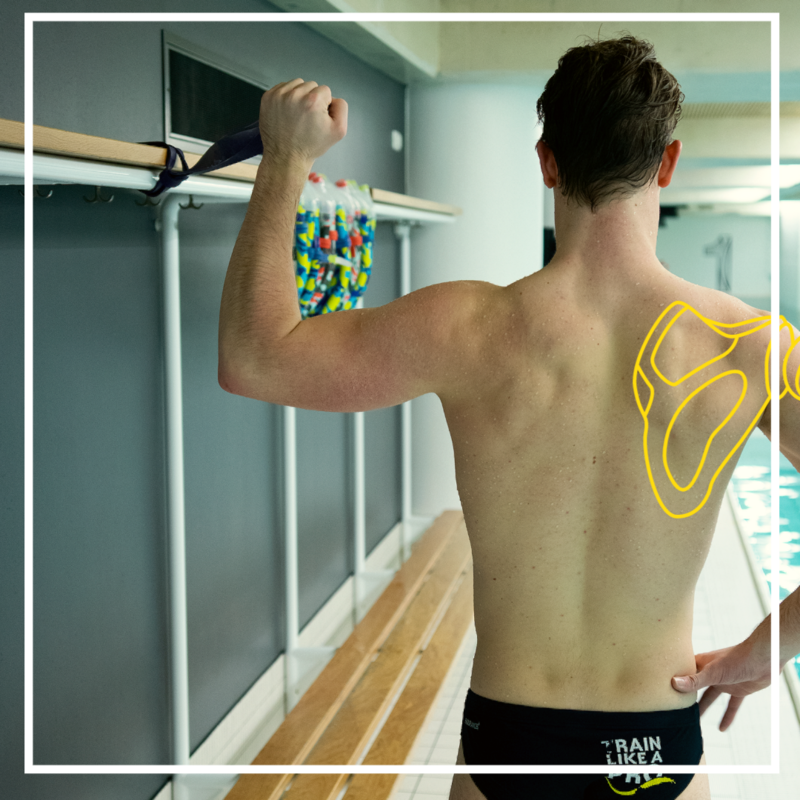Swimming blog - TRAINING HOW TO PREVENT SHOULDER INJURIES?
Even though swimming is a low impact sport, swimmers who regularly swim are prone to shoulder pains, also known as "swimmer's shoulder". Luckily you can prevent shoulder injuries as a swimmer, to achieve this there are some key elements we need to talk about. Let's dive in and get to the bottom of it.
We often hear that swimming is a low impact sport, which is definitely true compared to most other sports. However, most swimmers do experience shoulder pains when they start swimming more regularly. You can battle these shoulder pains, and hopefully prevent them becoming an injuring, by training your shoulders. Shoulder strength, mobility and flexibility play a huge role in this.
What are the causes?
We generate up to 85% of our speed and forward movement in swimming from our arms. We are using them a lot, in fact, we are using them all the time while swimming. Because of this, overuse and flawed technique can be detrimental.
Your hand entry is a small, but very important element of your freestyle. Incorrect hand entry is one reason a swimmer may experience shoulder pain. If we enter the water thumb first or with a straight arm, we will tend to push down on the water, hence placing a lot of strain on the shoulder.
Another reason for shoulder injury is not rotating your body enough, which restricts a good arm recovery. Body rotation allows the arm to exit the water naturally so the recovery can take place with a leading elbow. If we do not rotate enough, we will exit the water with a straight arm and our recovery will be to the side (a wide recovery), which places huge amounts of strain on the shoulder joint.
Top swimmers will spend at least a third of their training hours working on technique and the prevention of shoulder injuries. Why are we so reluctant to join them? Is it not enough time, know-how or do we just want to swim lots and lots of meters, thinking that is the only road to swimming glory?
To achieve an injury-free swimming life, there are some key elements we need to talk about and implement in our weekly swimming lives.
Prevention – Technique
We have talked about it already, but we can’t emphasise it enough. Technique, technique -technique! Focus on your hand entry, catch and recovery technique. Watch our tutorials and drill videos till you are dreaming about the movements and they become natural in the water. Take the time to go slowly, execute the right technique and move in ways that promote shoulder health. And do it often.

Prevention – Warm up & cool down
Warm up and cool down. We see swimmers get in the pool and swim far too fast in warm up, as if they are being chased by a hippopotamus. Then swim like mad things at the end of a training to get the last couple of meters in before the end of their session. Warming up and cooling down are integral in getting body and mind aligned. Take it slow, real slow and focus on a technique drill while warming up. No one cares about you destroying yourself in the warm up and cool down, except for your shoulders.
Prevention – Dryland
Most swimmers do experience shoulder pains when they start swimming more regularly. You can battle these shoulder pains, and hopefully prevent them becoming an injuring, by training your shoulders. Shoulder strength, mobility and flexibility play a huge role in this. Watch the video above for some dryland tips & tricks. We advise doing shoulder exercises at least once a week. This also depends on how often you swim, and the intensity of your workouts. Anytime is a good time to work on this. It’s called greasing the wheel.

Prevention – Balance is key
Training balance is another way to minimise shoulder injuries. Build up your training workload slowly. Increase your swimming distance by no more than 10 – 20% per week. Over-enthusiasm is a shoulder killer.
Another important point is to balance easy and hard swims. Don’t push the boat out too far in terms of hard swims. You may feel strong and fit, but after a hard session the day before, it’s better to swim easy and give your body time to adapt and recover. Remember, swimming glory comes from consistency, not a one-time effort. It’s all about coming back tomorrow. Injure yourself by going too hard and you may be out for weeks or months.
The good news is that if you keep the above pointers in mind and use them on a regular basis, you can prevent injuries and increase your swimming pleasure and distance effortlessly.